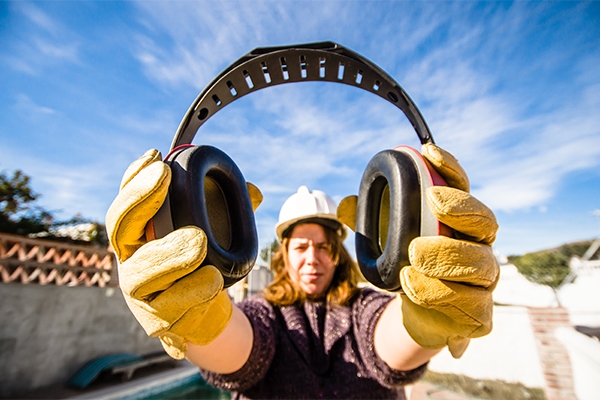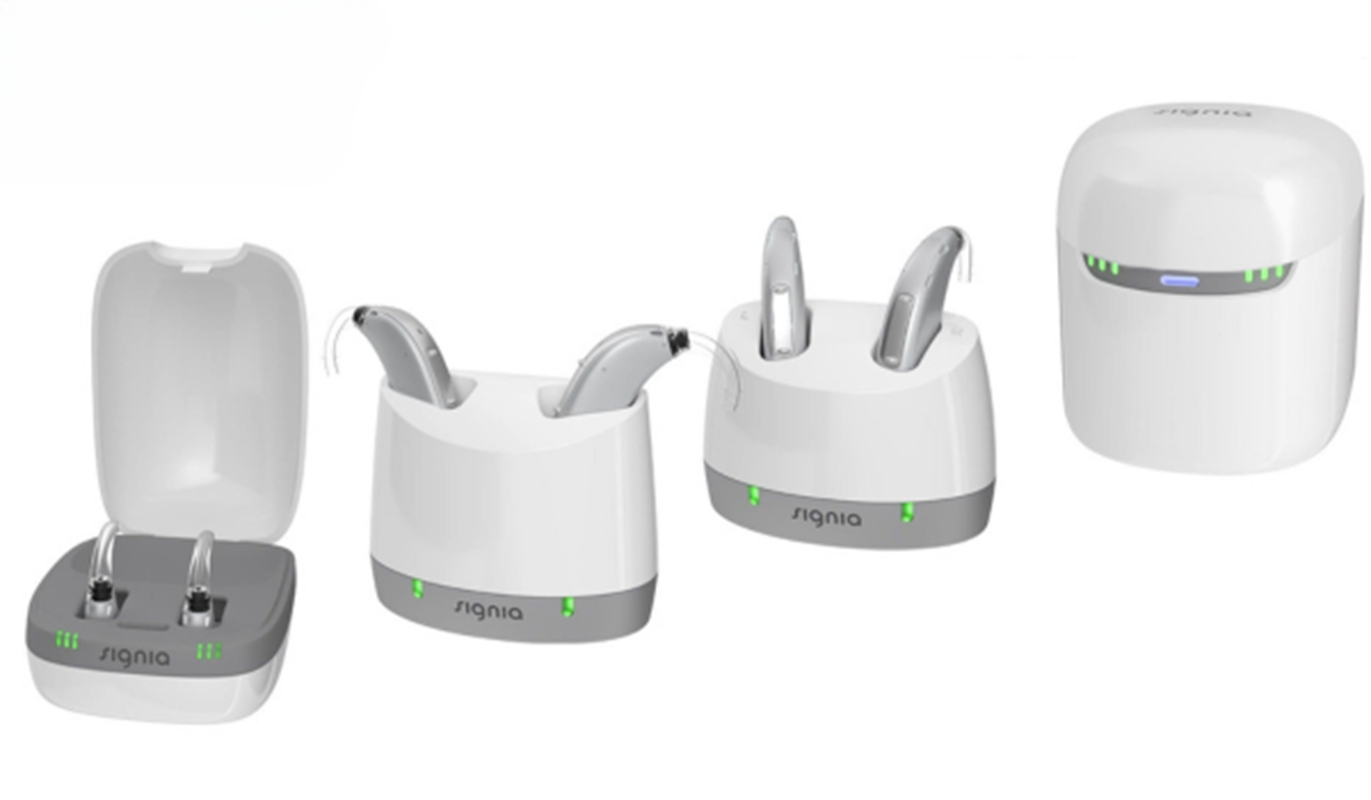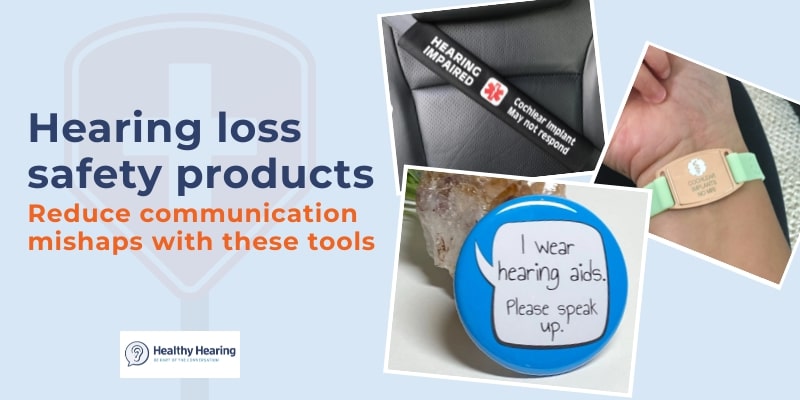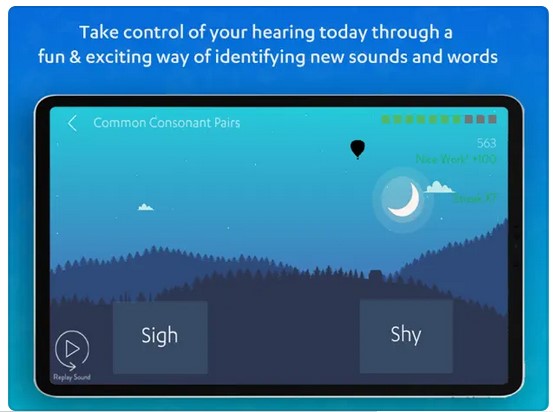Thanks to modern technology, your smartphone and/or smartwatch can measure decibels to determine if your environment exposes you to harmful noises that may cause permanent or temporary noise-induced hearing loss (NIHL).
Keep in mind these devices and apps are unlikely to be as accurate as handheld sound level meters, which are used by professionals to measure sound. They also do not meet ANSI and OSHA requirements for evaluating workplace noise, conducting OSHA sound surveys, evaluating sound rooms used for Hearing Conservation Program (HCP) testing, or monitoring noise during a hearing test that is part of an HCP.
Let's look at noise-monitoring functions that may come built-in to your iPhone or Apple watch, plus some of the top apps for both iOS and Android phones:
Tracking decibels with your iPhone or Apple Watch
If you have an iPhone or an Apple Watch you already have built-in apps to track decibels in certain situations.
To monitor your headphone levels, go to Settings, open Control Center, and add the Hearing option. Once your headphones are connected, tap the Hearing icon in the Control Center while listening to see the real-time decibel level of your headphones on the Headphone Level meter.
You can also monitor your headphone decibel levels over time with the Health app. This will help you gauge your average exposure from week to week and help to ensure you're listening at safe levels.
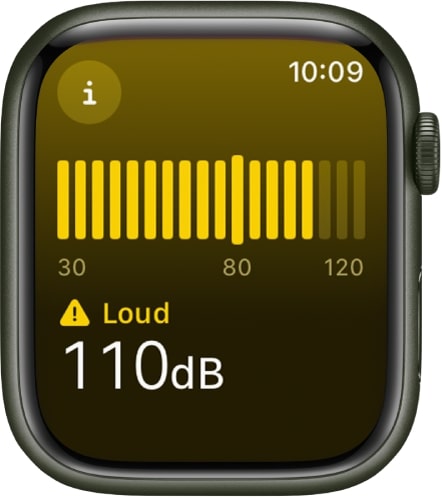
can send alerts when noise levels
are high.
To monitor noise in your environment, your Apple Watch comes equipped with the Noise app. It continuously monitors the ambient noise levels in your environment, and if it detects sound levels that could harm your hearing, it sends an alert. The app records these measurements and syncs the data with the Health app to track and review your exposure to loud noises over time.
There are also numerous apps for both Android and iOS phones that can better help you protect your hearing. Let's look at a few of the more popular options:
Apps for both Android and iOS
Decibel X
App Store rating: 4.6 stars, free, offers in-app purchases
Google Play rating: 3.8 stars, free, in-app purchases
This highly-rated app turns your smartphone into a pre-calibrated, accurate and portable sound level meter. It has a standard measurement range from 30 to 130 dB. It boasts many features for measuring the intensity of sound around you built into a nicely-designed, intuitive user interface.
Apps for iOS only
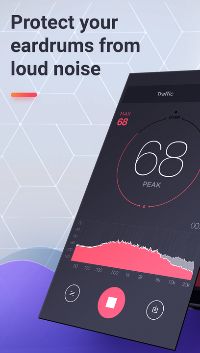
Decibel Pro: dB Sound Level Meter
App Store rating: 4.6 stars, free, offers in app purchases
Measure noise at home or in the workplace and calibrate home or professional audio equipment with this free app which includes a noise dosimeter, spectrum analyzer with RTA, FFT and Spectogram, as well as a hearing test.
Sound Meter (Noise Detector)
App Store rating: 4.5 stars, free
Use this app to be alerted when dangerous noise levels are present, test your hearing, and listen to music for relaxation and focus. Features can be used to test noise in your environment, including buildings and cars, to determine if they meet industry standards.
SPL Meter
App Store rating: 4 stars, $.99, offers in-app purchases
This professional-grade sound level meter is measured after a traditional sound press level (SPL) meter, including ballistics, ranges, filters and decay rates. It uses your device’s microphone to detect sound and convert it into a SPL value. The app comes pre-calibrated for most iPhones but can be adjusted to match professional calibrated meters. The universal app can be shared on all iOS devices. A simple color-coded display indicates safe (green) and dangerous (red) hearing levels.
Too Noisy Pro
iTunes rating: 4 stars, $7.99
This easy-to-use app is built specifically for measuring noise levels in environments where there are groups of children. Teachers can use the Too Noisy app to keep watch on the sound levels in the classrooms and control the noise level. The interface is simple and designed so children will respond to it, graphically displaying noise levels in a fun and engaging way. Teachers and other childcare workers can adjust the sensitivity of the app to cater to louder activities and sudden noises with the sensitivity and dampening sliders.
NIOSH Sound Level Meter
App Store rating: 4.7 stars, free
Developed by the National Institute for Occupational Safety and Health (NIOSH), this app is exclusive to iPhone and is a useful tool for anyone working in noisy environments. It can raise employees' awareness about the noise levels in their workplace, help them make informed decisions about their hearing health and determine when hearing protection is necessary. Researchers can also use the app to collect data about noise exposure.
SPLnFFT Noise Meter
App store rating: 4.9 stars, $3.99
Designed by a signal processing expert, the advanced features on this app for iOS devices include a frequency analyzer, frequency meter, test signal generator and dosimeter. A simple interface displays the level of exposure using color—orange or red indicates dangerous levels where hearing protection is required. The app is recommended by the Laborers Health and Safety Fund of North America.
Apps for Android only
Sound Meter Pro
Google Play rating: 4.4 stars, $2.50
This app uses your smartphone’s microphone to detect sound and display it in decibels as well as display the last 30 seconds of data on an easy-to-read graph. Because the microphones in Android devices are used to record human voices, the maximum levels on this app are limited and sounds above 100dB are not recognized.
Sound Meter and Noise Detector
Google Play rating: 4.1 stars, free
Like most sound meter apps, this one uses your smartphone microphone to measure the sound in your environment. The decibel level is displayed on an easy-to-read dial. The history function indicates how long you’ve been exposed to the noise along with the noise reference, i.e., noisy street or quiet library.
Other apps for hearing loss

your enviroment could cause noise-induced
hearing loss (NIHL).
If you or a loved one has hearing loss or are concerned about noise levels, see our other articles on apps:
- Brain training apps for hearing loss
- Smartphone apps for hearing loss: My top picks
- Hearing aid apps: What are they?
- Apps for tinnitus
- Top sign language apps
- Popular caption apps
- Apps to measure noise levels
These apps can be very helpful in specific situations, but they are not a replacement for good hearing healthcare or properly fit hearing aids.
If you suspect you or your child has hearing loss and need to find a hearing center near you, please visit our directory of consumer-reviewed hearing clinics.
The above is the interpretation of Best Sound Meter Apps to Measure Noise Levels provided by Chinese hearing aid supplier Shenrui Medical. Link https://www.srmcm.com/Blog/Best_Sound_Meter_Apps_to_Measure_Noise_Levels.html of this article is welcome to share and forward. For more hearing aid related information, please visit Blog or take a look at our Hearing aids products






